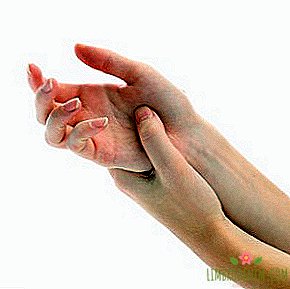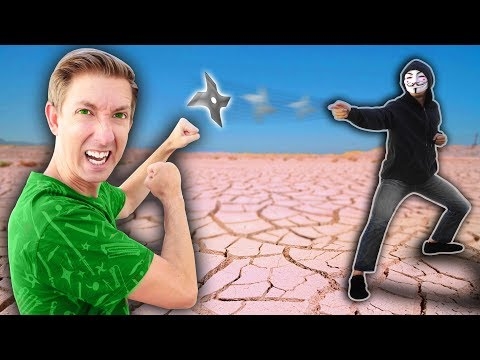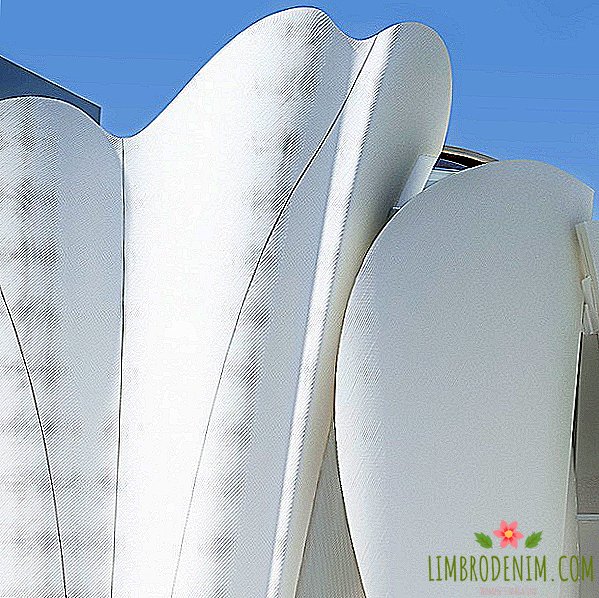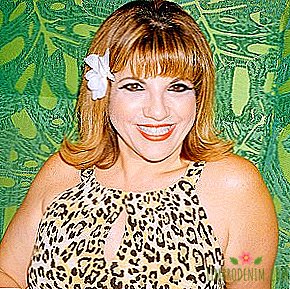City of pride: How I visited the Stockholm Pride
What Stockholm Pride special (massive, elegant, free, world-famous), probably, everyone who has at least some relation to LGBT + knows. My upcoming trip to one of the largest prides in Europe was envied by all my friends, and the ex-girlfriend asked for luggage in my suitcase. Why, I'm jealous of myself.
Rainbow everywhere
Since 1998, when the first pride was held in Stockholm, he managed to turn into a large-scale event. This is not only what the Russian language refers to as a “gay parade” and that was the reason for a variety of homophobic jokes and apocalyptic fantasies about the extinction of humanity due to “naked men in feathers”. Pride lasts a week and includes many different lectures, concerts and parties. Everything ends, of course, with the parade - a pride parade, which not only residents of the capital of Sweden come to see, regardless of orientation and gender identity, but also people from other cities and even from other countries - literally hundreds of thousands of people (about fifty thousand participants and about five hundred thousand spectators). This does not cause any significant objections to anyone - they are happy about the whole country.
Of course, when you live in a state with a federal law on “gay propaganda,” it seems to you that in other places there is something special in the air, or people have a different blood composition - in general, they, unlike us, such things as LGBT + rights and gender equality are a product of the natural development of society, something that turned out by itself. But this is not the case, and the path to this was a difficult and long one. It is useful for us to know this, not only because thoughts of a different blood composition are not particularly soul-saving, but also because seeing the result of someone’s difficult struggle is a great support in difficult times.
I spread the first rainbow in Stories right at the airport: this is actually an advertisement for the Arlanda airport - something with a suitcase, the very rainbow and the desire to travel with pride. Then there will be so many rainbows that I will stop responding to it - and I will also think about the commercialization of the agenda and marketing. But on the first and second days, like a baby from a cage, I passionately photograph everything with rainbow symbolism - from a clothing store window, where T-shirts are carefully hung in appropriate colors, to a colorful cup with an inscription "Be true be you" on the street (as it turned out later, from the 7-Eleven supermarket). And this is not counting the advertising of banks and mobile operators, the impressive baroque building of the local theater with a rainbow flag flying on the facade, traffic lights with a schematic male couple on a red signal and a female one on green and the devil knows what else.
While I, in search of my hotel, twice walked around a small, touristy street of the Old Town (two meters wide, stone pavement, medieval houses with shutters, expensive souvenirs), a rainbow caught my eye countless times. I felt good (like a Russian-speaking lesbian couple who was unfamiliar to me, who was taking a picture of the same glass lying next to a cigarette butt), and I was glad to see a rainbow icon attached to my jacket, which I usually am afraid to go down in the subway.
Dancing police
The Swedish institute, which organized a trip for guests from different countries (citizens of Ukraine, Belarus, Zimbabwe, South Africa, Kosovo, Bangladesh and Vietnam were with us), put together such a program that when you looked at it you were dizzy - it was enough to follow the benevolent (here all friendly) coordinator. From the Swedish Institute - on a tour of the Old Town, from an excursion - to the police station, from the police station - to the office of the Swedish Federation for LGBT Rights, from there to the first House for Elderly LGBT People in the world, from there to the Swedish Institute . The next day - the Swedish Institute, the church (!), Pride Park.
Pride Park (organized in the center of the city space with a stage, a variety of areas, including the BDSM zone, where you can not take pictures, tents with food and representative offices of different organizations) works throughout the pride week and is the end point of the parade. Entrance here, as well as many pride events, is paid and worth a lot of money. This became a serious reason for criticism: some, even having the opportunity to get here for free, do not enter the territory of the pride park - out of solidarity with those to whom it is not available. At the end of the pride, the people here are also not as many as, say, in a large park in Helsinki, where, after the pride, a free concert and a picnic take place.
Barbro Westerholm, a member of parliament, an elderly woman with short, gray-haired hair, tells how in 1979 she removed homosexuality from the classification of diseases. Of course, this was only the middle of the road, begun in 1944, when homosexual relations ceased to be a crime. Only in 2009 the marriage law became neutral with respect to the sex of spouses, in 2003 same-sex couples were allowed to adopt children; in 2005, lesbians were given the right to artificial insemination, in 2011, constitutionally prohibited discrimination on the basis of sexual orientation, and in 2013 they abolished mandatory sterilization under the law on sex correction; however, transgenderism still remains on the list of mental disorders. She tells how famous people started making coming-outs, how it supported the whole community and accelerated the liberalization of legislation.
For the right to stand in front of us now and smile to policeman Goran, I think I had to pay a considerable price.
A representative of the city administration shows a touching video about how well gay people are in Stockholm (I would like to see the same thing about lesbians), and in detail describes how much money the LGBT tourists bring to the city: for them, they once started developing a special program map, which eventually ceased to be special and merged with all the other city attractions.
Smiling policeman Goran Stanton tells how he founded the hate crime unit and the Homosexual Police Association, and shows videos from the pride - the blue people dancing around the police car, the main one of which is Goran. Between the lines of the story about the joys and achievements one can see how difficult Goran had at one time, when it was necessary to choose between openness and career, between the normal desire for any person to tell colleagues about his husband and unwillingness to face the claims that “you are too bulging homosexuality. " "And when you talk about your families or kiss on the street - you do not stick out?" - Stanton asks bitterly in his voice.
For the right to stand in front of us now and smile at Goran, I think I had to pay a considerable price. I clarify about the law on domestic and sexual violence - do they apply equally to such manifestations in heterosexual and same-sex couples. I ask for a reason: if lately people have started talking about violence against men in Russia lately, violence in the homosexual environment remains invisible, and it is impossible for the homosexual victims to get either help or protection. "We treat everyone the same way," I get back.
Christer Fallman, elderly gay, is also quite cheerful, along with friends leads us around the House for elderly gays and lesbians: small apartments with white walls, lots of wood, glass, geometric shapes, minimalism (typical Swedish architecture), from the roof a great view of the harbor . Krister sings ABBA and flirts with the band members as a joke. “We needed a safe space,” says Krister's friend. “We spent so much effort getting out of the closet, and we didn’t want to get in there again - there are so many homophobes among our generation. We just needed the opportunity to remain ourselves.” . It is noticeable that at one time it was not easy for them either. “I used to go to all the prides, but now I leave this opportunity to the young,” she continues.
“We spent so much effort on getting out of the closet, and we didn’t want to get there again - after all, there are so many homophobes among our generation”
In the church, where you can marry same-sex couples since 2009, we learn that the Bible leaves a lot of room for interpretations (they used to be killed in the name of Christ, and now they also bless love), and in the RFSL organization (Swedish Federation for LGBT Rights ) - that employees of the migration service do not consider Russia a dangerous enough country for LGBT + to give people refugee status from there.
Karin Salmson, an employee of the Olika book publishing house, brought books: multicolored children's publications in which there are places for children of different races, from different families (adopted children, children of two lesbian mothers with carefully painted hair on their legs, children of their parents in divorce), different gender , different orientations, children with features. In these books, girls play football, make scientific discoveries, a team of tattooed pirates (also with different skin colors) surf the sea, the boy wears a dress, and an African child helps a white homeless person ("It's important to overcome the stereotype that usually white people help others" - says Karin).
"The features of these children are not related to the plots of the books - these children are just as they are. It is very important that every child has the opportunity to see himself in the characters," notes Karin Salmson. From her presentation I want to cry: I try to imagine how my life would turn, if in my childhood, when I gulped books one by one, instead of countless stories about the adventures of boys and men, I would have come across a book about such pirates. At the end of the presentation it turns out that you can take the book yourself. I, in disbelief, grab the pirates, and even if I don’t understand a word in Swedish, the pictures of the adventures of the audacious queen of the sea impressed me so much that for the rest of the day I pressed the book to my chest as if I were four again.
Proud parent
On the day of the pride, my ear snatches the native speech out of the noise of the crowd on the street: “Well, shall we beat those who will come to the parade?” I turn around and see an intelligent-looking woman with a teenage daughter. Being touched by the reminder of the motherland, I am going to the parade that began an hour ago.
Bursting into one of the columns (it turns out she belongs to some bank), my friend and I, a human rights activist from Moldova, run to the beginning of the parade: I with my Russian-language poster "Feminism for all", with the flag of Moldova flying behind my back. The sky is clear, then pours rain, we burst out laughing through the congestion of people (drag queens, girls with bare breasts, people in wheelchairs, kissing guys, those same men in feathers, small children), skirting trucks and platforms with music - lots of music (Shakira, Freddie Mercury, singing sailors in pink golf, rap, Lady Gaga, Middle Eastern motifs), dancing and singing along with the crowd, and when the crowd ends - run to the next column in empty space, meeting whistles, applause and smiles spectators (five dense rows, on tr tuar no room to fall). We pass the columns of Black Lives Matter, of a hotel and a mobile operator, again of a bank, pushing through, it seems, a kilometer-long column of feminists; here is the Kurdistan column, and here is the Tel Aviv column, with greetings from one pride to another.
Not far from the pride park we stop, get up to the spectators. The columns do not all end: we counted up to ninety - and this is not even half. Here came the fire truck; everyone looks at how a rainbow flag unfolds over her, and she suddenly douches everyone with water (not so much a pleasant surprise). Goes army column, and here are old friends - dancing police. Here is a long column, all its participants and participants of mature age, on each chest there is a ribbon with an inscription. The fact that the Proud Parent is written on these ribbons can be guessed, for example, by the joy with which one of these men leads her lesbian daughter by the hand.
These parades are not about who you sleep with (although about it too) - they are about who you are
Looking at this parade, it is difficult to understand who is in this crowd of LGBT + people and who is not - and this also applies to viewers and participants. I note for myself an important feature: this pride is very young. Most of the participants do not appear to be eighteen years old, and a significant part looks like fourteen years. Here are two very young girls kissing in the middle of the street - absolutely happy. Here are young and proud transgender people. When a truck with columns passes around me, countless schoolchildren are jumping around me, singing along "Oh there ain't no other way, baby I was born this way, baby I was born this way", I was very happy and very painful. In order to hide emotions, I begin to joke bitterly about Geyrope dying from gay marriages and that “grandfathers fought”. After that, I think that the grandfathers really fought: the policeman Goran, and Chris, and his friends and girlfriends from the home for the elderly, fought so that these teenagers could feel good and free on these streets.
Everyone asks why these parades are needed, why it is necessary so openly to demonstrate "who are you sleeping with." So, these parades are not about who you sleep with (although about it too) - they are about who you are. Heterosexual people can demonstrate their identity at any time, which is why heteroparades are really not necessary - they already exist everywhere. For LGBT + the opportunity to show that we are proud of who we are, and not to hide it almost every second on the street, at work, in the store, at the cinema, at school and in any other places, somewhere appeared quite recently, and where many did not appear.
On the first day of my stay in Stockholm, I went to a party. You know, it happens, you come to a party, and everyone around is so fashionable that you don’t know how to move, so that they don’t think about you badly? So, at this Stockholm party surrounded by very fashionable people, I felt that I could do anything (except to harm anyone) - and I would meet only smiles. And the pride, apart from all political aspects, is first of all such a party where no one will judge you for who you are. At such a party, everything can be good, and it doesn’t matter if your features are related to sexual orientation, gender identity, skin color, or just love to strange music - every feature is important, and any of them has a place at such a party.





